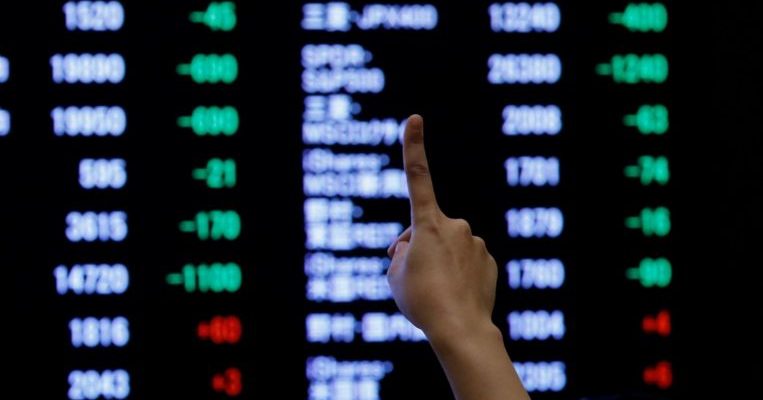
SYDNEY (REUTERS) – Asian share markets firmed on Monday (Oct 14) as signs of progress in the US-China trade standoff whetted risk appetites, though investors remained wary of the damage already done to the global economy.
underlined the pain felt as dollar-denominated exports and imports both fell by more than expected in September.
Liquidity was also lacking with Japan off and a partial market holiday in the United States for Columbus Day. MSCI’s broadest index of Asia-Pacific shares outside Japan rose 1.1 per cent in light trade. Australia’s main index tacked on 0.6 per cent and South Korea rose 1.4 per cent. Shanghai blue chips added 1.4 per cent.
In Singapore, stocks pared some of their morning gains on Monday afternoon with the Straits Times Index up 0.34 per cent or 10.52 points on the day to 3,124.49 as at 1.05pm.
DBS rose $0.16 or 0.6 per cent to $25.06, UOB was up $0.25 or 1 per cent to $26.17, and OCBC gained $0.03 or 0.3 per cent to $10.77.
Sentiment had been boosted when US President Donald Trump outlined the first phase of a deal to end a trade war with China and suspended a threatened tariff hike, though officials on both sides said much more work needed to be done. The emerging deal, covering agriculture, currency and some aspects of intellectual property protections, would represent the biggest step by the two countries in 15 months.
Analysts, however, advised caution.
“We have seen a truce established, and then broken, before,” said Tai Hui, chief market strategist for Asia at JPMorgan Asset Management.
“The threat to global growth is weak corporate capex, and potentially spilling over into the consumer sector,” Hui added. “CEOs are not going to restart investing again merely because of the latest round of agreement between the two sides.”
The drag from the trade war was a major reason Singapore’s central bank on Monday for the first time in three years as data showed the city-state’s economy had .
BIG WEEK FOR BREXIT
The progress on trade was still enough to slug safe-haven bonds with yields on US 10-year Treasury notes climbing 23 basis points last week to stand at 1.74 per cent.
The yield curve also steepened as short-term rates were held down by news the Fed would start buying about US$60 billion per month in Treasury bills to ensure “ample reserves” in the banking system.
The rally in risk assets had seen the yen ease across the board, leaving the US dollar holding at 108.32 on Monday after hitting a 10-week top around 108.61 on Friday.
The dollar fared less well elsewhere, partly due to a jump in the pound, and was last at 98.435 against a basket of currencies after losing 0.5 per cent last week.
The dollar also slipped 0.5 per cent on the Chinese yuan to stand at 7.0500.
The pound was trading cautiously at US$1.2614 having surged to a 15-week high around US$1.2705 on Friday on optimism Britain could reach a deal on Brexit with the European Union.
However, officials from Downing Street and the EU said on Sunday a lot more work would be needed to secure an agreement on Britain’s departure from the bloc.
The two sides will hold more talks on Monday ahead of a summit of EU leaders in Brussels on Thursday and Friday.
The general improvement in risk sentiment saw spot gold ease another 0.2 per cent to US$1,486.99 per ounce.
Oil prices pared gains made on Friday when reports surfaced that an Iranian state-owned oil tanker had been attacked in the Red Sea.
Investors were also anxiously watching Turkey’s incursion into Syria as the White House threatened to impose heavy sanctions on Ankara.
Brent crude futures eased 26 cents at US$60.25, while US crude lost 25 cents to US$54.45 a barrel.
